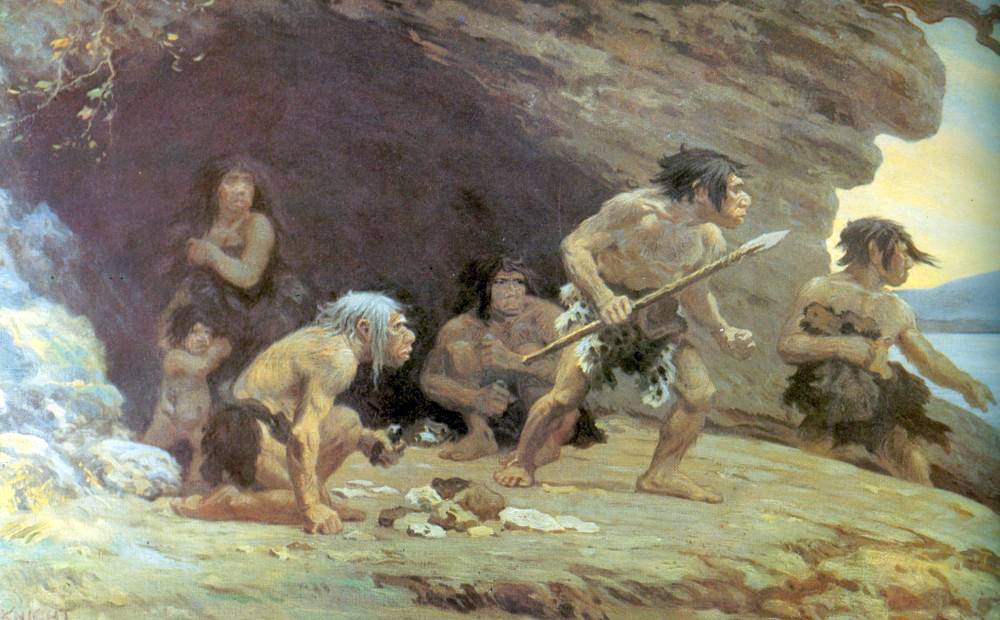Also known as the Paleolithic or Paleo diet, the prehistoric diet, the caveman diet or the hunter-gatherer diet. The term refers to the type of diet our ancestors followed for well over a million years before the introduction of agriculture. The early Homo Sapiens and Neanderthals went out and foraged for food by hunting animals and gathering edible plants. What hunter-gatherers ate depended much on what they found in each season.
When did Early Humans appear
The Paleolithic era began 2.5 million years BC and ended 10,000 years BC. It is assumed that it takes about one million years for an animal’s genes to adapt its metabolism and physiology to a changing lifestyle and diet. The human genome has not changed much during the last 2.6 million years, which means our bodies are still used to the diet of a hunter-gatherer. This may be the very reason why modern-day diseases such as cancer, obesity, diabetes, and heart disease have emerged due to our huge change in diet.

What did the Neanderthals eat?
Thanks to fossil records, we have a pretty good idea what humans ate during the Palaeolithic era and it is quite different from the refined foods we consume these days.
Neanderthals did not eat cereal grains, salt their food, nor ate refined sugars, with the exception of the occasional honey. Neither did they drink milk, because it was impossible to milk wild animals.
DNA suggests that Neanderthals were meat lovers. Their diet was rich in protein, fibers, nutrients and low in carbohydrates. The only carbs came from berries and vegetables. Our ancestors had a much different lifestyle than us. They were much more physically active, therefore requiring a “high-calorie diet”.
Diets also varied, depending much where Neanderthals lived. Neanderthals in the cold northern habitats most likely ate a more animal-based diet, whereas those that lived further south where vegetation was more divers had a more plant-based diet. Because of this, it is quite impossible to identify one Stone Age diet.
Hunter-gatherer foods that are suitable for the paleo diet include:
- Meat, Eggs, Seafood, both fish and shellfish
- Insects and larvae
- Vegetables, including those root vegetables that can be eaten raw
- Fruits, nuts, and seeds
- Herbs and spices
- Natural sugars, such as honey, maple sugar, and date sugar
According to paleo dieters, humans are not designed to eat:
- Grains and flour
- Legumes, including peanuts, beans, peas, cashews, tofu, soy milk, and soy flour
- Root vegetables that cannot be eaten raw, such as potato, tapioca, parsnips, sweet potato, and yam
- Refined sugars
- Foods that contain yeast
- Juices, sodas, and coffee, Alcohol
Dairy products - Processed meats
Stone Age diet – good or bad?
The idea behind the Stone Age diet is that food, which comes directly from nature, is the best food for humans. Methods that influence food with modern-day techniques, which include processed and refined foods, are in theory unnatural. Evidence suggests that following this diet may lead to improvements in our bodily health.
At first glance, the Stone Age diet may seem like a good option – including fresh fruits and vegetables, healthy fats, protein, limited amounts of sodium and sugar and leaving out whole grains and legumes. However, following this diet can lead to nutritional deficiencies; for example, cutting out grains and legumes can lead to a lack of certain B vitamins or excluding diary could lead to calcium deficiencies and this can cause side effects such as weakness, headaches, and diarrhea.
Conclusion:
There is no one particular Stone Age diet. The diets varied greatly and our ancestors were simply acquiring enough calories to survive and reproduce. Food was opportunistic, balancing the diet was not an issue.
The paleo diet may be a good way to eat less processed and refined foods and to increase the intake of fruits and vegetables to improve the overall health. But leaving out whole grains and legumes may result in a lack of nutrients. So whatever diet you choose, it is important to always find a balanced, nutrient-dense diet that agrees to your lifestyle.
References:
https://www.medicalnewstoday.com/articles/93478.php
https://www.theguardian.com/science/2003/dec/04/thisweekssciencequestions4
https://www.cbsnews.com/news/cavemen-paleo-diet/
https://www.health.harvard.edu/diet-and-weight-loss/the-paleo-diet-back-to-the-stone-age
https://food.ndtv.com/health/should-we-turn-to-a-stone-age-diet-to-stay-fit-and-healthy-1278408
